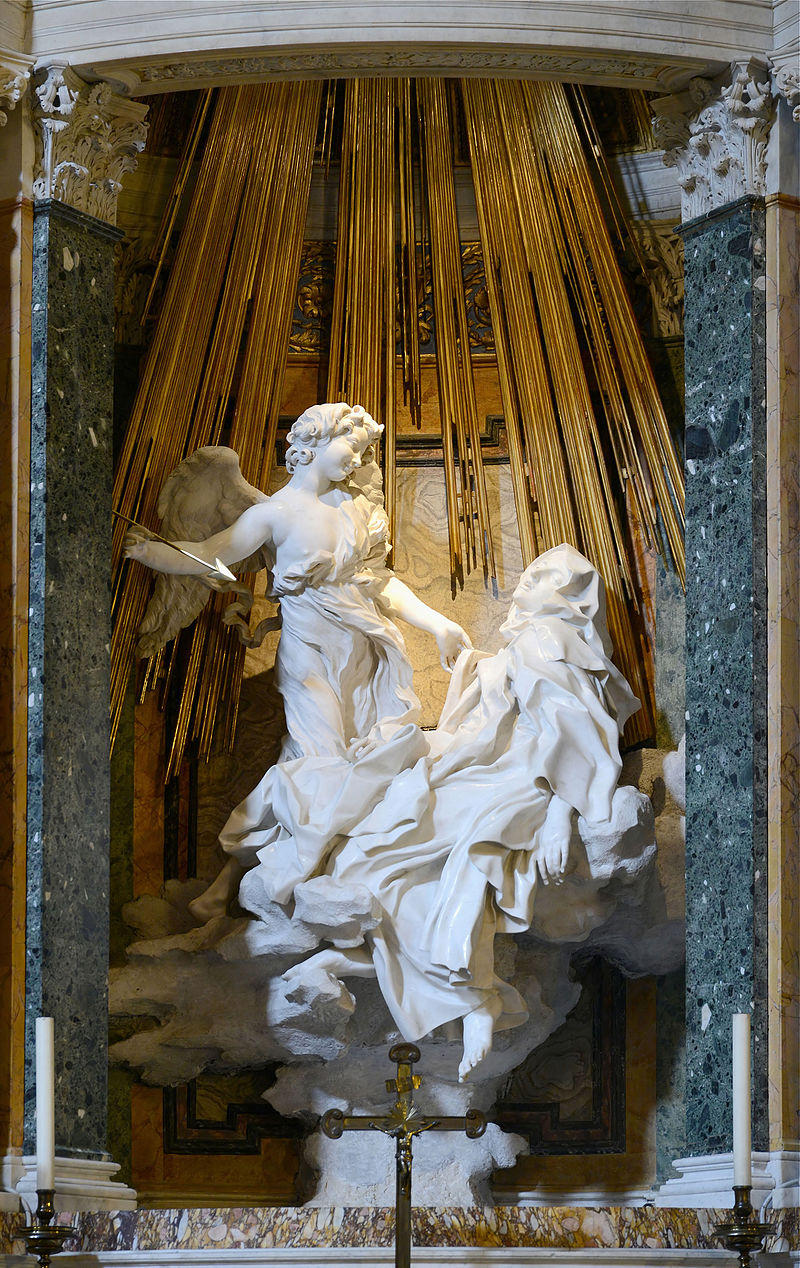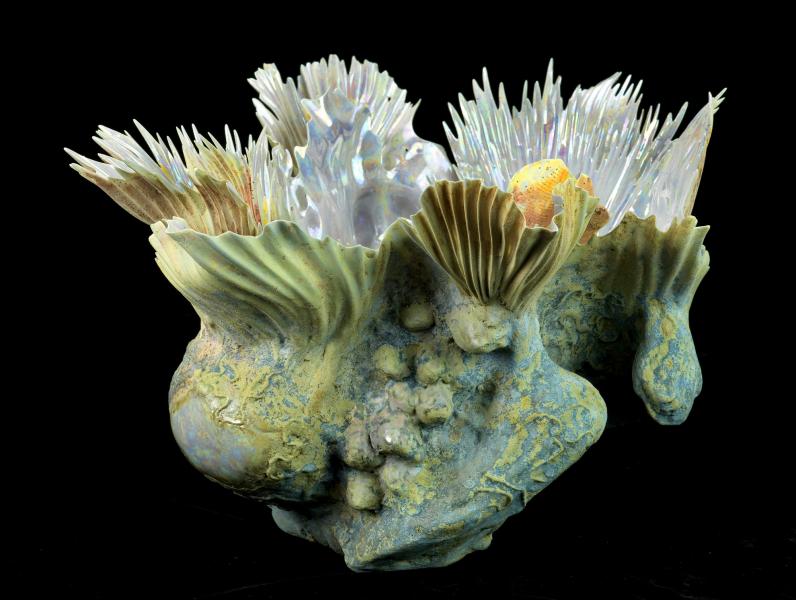Elena Karina, St. Theresa, 1979, glazed porcelain
Smithsonian American Art Museum, Museum purchase, 1980.99
Although there is no St. Theresa, there are many Saint Teresas in the Catholic church, most of whom have followed in the footsteps of Teresa of Avila. There are dozens of associations with the various Saint Teresas, including mystic thought and lives lived as hermits. Someone savvy to art history may know Teresa of Avila as depicted by the Baroque artist Bernini (“Ecstasy of Saint Teresa”) ; that depiction of St. Teresa is theatrical, with natural light and figurative golden light raining down upon it.
That ornate design is exactly what St. Theresa does bring to mind; its pearl sheen like angelic light, and its rising ridges and peaks like a saintess’s halo. While this is an obvious connection for the audience, Elena Karina wasn’t interested in the revelry of anything but the natural motifs she imitated. Karina had stated: “Well, don't you think that all names are, in a sense, rather arbitrary labels of convenience?”
While Bruria states that the use of shell in her work is undoubtedly feminine and yonic, the intention of Karina’s use of shell is to evoke the forms of shells and tide pools. Femininity is a concept that is brought to this work from knowledge of its title; it is not inherent in the work without that.



